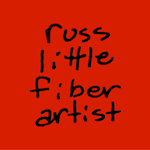How to choose the right thread for your quilting project
Thread selection has always been a mystery to me. I’ll go further and say that it amounts to what can almost be called occult knowledge–known to a select few and a mist-shrouded curiosity to all others. Just where does one learn about thread weight, content, needle sizes and all of that stuff? I don’t want to engage in too much naming of names and pointing of fingers, but I will say that when I learned to sew as a kid there was Coats & Clark. That was about all you could get at the local fabric store. I didn’t know there was anything else. When I bought my first Bernina almost 20 years ago, the salesperson turned her nose up at my thread and said, with great conviction, “Ah yes, well, We recommend Guttermann.” For the full effect, you need to pronounce “we” with a roll of the tongue and air of the royal “We”. Coats & Clark and Gutermann are fine products, but I’ve discovered there are others that might cost more but are worth every last penny.
Right now I’m using up my stock of Guttermann 100% polyester for piecing. I’ve switched to Aurifil 50 wt 100% cotton for quilting. It is a virtually lint-free, sews beautifully, and produces wonderful results with Schmetz Microtex 70/10 needles. When I say lint-free I’m not kidding. In my sewing lifetime I think I’ve pulled enough lint out of sewing machines to stuff a pillow. I always thought it came from the batting and the fabric. While I know that those are contributing factors, switching to a higher quality thread has produced a tremendous reduction in messy machine lint and the problems that it can cause.
I’m also considering experimenting with some Superior Threads So Fine 50 weight. It’s a 3 filament polyester. Why would I consider switching from 100% cotton to polyester? Two words: long arm. I just purchased a long arm machine that can sew 1,500 stitches per minute. A stronger thread makes a great deal of sense at that speed.
So, what are the factors that you should consider then you choose a machine needle and thread? I offer a few things to consider below. This is by no means an exhaustive or authoritative list. I’ll update this posting as I learn more. I’m also providing a list of a few good online resources that have helped me learn more about thread.
Thread size/weight
- The lower the weight number, the thicker the thread.
- 30 weight is heavier than 50 and will be more visible on the surface of the quilt.
- 50 weight is good for quilting if you want the thread to blend into the surface.
- Choosing your thread weight for topstitching (i.e., quilting) is a design consideration.
- The choice of thread weight for garments is more about fabric weight. You wouldn’t use a light weight thread on denim unless you really want to come busting out of your jeans.
Thread composition
- Choose cotton if you plan to dye what you’re sewing.
- Choose polyester for quilting if you need strength, especially in high-speed applications.
- Choose a high-quality cotton for quilting if you prefer cotton (e.g., Superior Threads King Tut or Aurifil Maco).
Needle selection
- The larger the number, the larger the eye of the needle.
- Match the needle to the thread and the weight of the fabric.
- Refer to the thread manufacturer’s website for guidance on needle selection.
- Domestic sewing machines and long arm machines use different types of needles. Needle requirements also vary from one long arm machine to another. Always refer to your machine documentation or the manufacturer’s website to identify the correct needle for your macine.
- I’ve been using Schmetz Microtex sharp needles in my Bernina 440. It’s a nice sharp needle that cleanly pierces the cotton broadcloth that I most often use. I’ve found that Aurifil 50 wt cotton sews well with the size 70/10 Microtex.
Resources
- superiorthreads.com – In addition to creating great products, Superior Threads has perhaps the best website for general education about thread.
- owensolivia.blogspot.com/2012/10/your-sewing-thread-under-microscope.html – This woman, Nancy, has created a great resource for seeing up close what makes one brand of thread different from another.
- www.aurifil.com/SiteAurifil/HOME.html – Choosing and using Aurifil thread.
- www.taunton.com/promotions/pdf/Threads_ThreadEssentials.pdf – “Threads” magazine article about thread.
- http://www.youtube.com/watchv=dZBNUKsCyxg&list=PLDEC89F1F5C79793A&index=2&feature=plpp_video – A great video from Handi Quilter explaining how tread, needle, and tension settings combine to produce good (or bad) stitch results. The video is specifically targeted at long arm users, but the principles apply to domestic machines as well.
